Future-Proofing Rollup Execution with zkEVM, Alt VM & Parallel EVMs
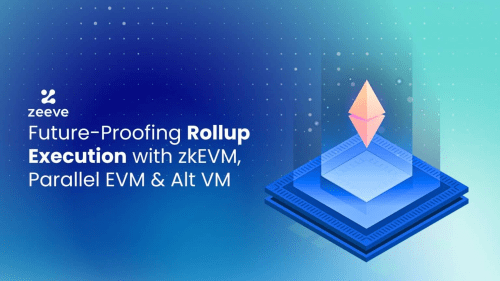
While EVM is the pioneer of virtual machines in blockchains, including L2/L3 rollups, it has certain limitations that have led to the innovation of many new virtual machines. Adoption for such new-age virtual machines can be seen rapidly across rollup chains. Considering this, our article discusses the three critical and novel innovations in virtual machines: zkEVM, AltVM, and parallel EVM execution. Before that, let’s shed some light on the core concept of the virtual machine itself.
A summarized overview of Virtual Machine (VMs)
Virtual machines are the smart engine and the backbone of blockchain ecosystems for enabling seamless execution of smart contracts and transaction processing in dApps. With VMs, a blockchain network gets its well-defined application-level logic containing the network’s state, transaction function, transactions, and APIs that allow users’ interaction with the blockchain. Ethereum virtual machine (EVM) is a highly decentralized, deterministic, and turning complete VM that powers the Ethereum ecosystem and diverse Ethereum dApps. However, constant innovations have happened in the virtual machine over the years, leading to the creation of multiple alternative VMs and parallel EVMs like Solana VM, Move VM, Polygon zkEVM, Zk Sync 2.0, and more. These new-age virtual machines are built to eliminate the challenges of EVM and they offer benefits like unparalleled throughput, cost efficiency, highest throughput, and battle-tested execution environment.
Deep dive into zkEVM, Alt VM, & Parallel EVM execution
Now, let’s dive deeper into zkEVM, Alt VM, and parallel EVMs to understand their core concept, advantages, and the projects offering them:
zkEVM
zkEVM or zero-knowledge Ethereum virtual machine is a Zk-powered virtual machine that enables the execution of smart contracts in a way that makes it fully compatible with Zk proof computations and also for the existing Ethereum ecosystem. zkEVM essentially replicates the native Ethereum environment to provide the same level of execution experience to web3 developers, but in a highly scalable and extremely secure Layer2 approach using zero-knowledge proof technology. This means developers now have a whole new environment to execute their smart contracts and manage dApps. As required, zkEVM can be designed as Type-1; fully Ethereum-equivalent, Type-2; fully EVM-equivalent, Type-2.5; EVM-equivalent, except for gas costs, Type-3; almost EVM-equivalent, or Type-4; high-level-language equivalent.
Execution environment, proving circuit, and verifier contract are the core components that uphold the entire zkEVM functioning. With that, zkEVM offers the following main advantages:
- Enhanced scalability: Unlocking better scalability is one of the main benefits of zkEVM. Leveraging the power of zero-knowledge proofs, zkEVM can handle massive transaction processing while also submitting their condensed proof to the L1 mainnet. This approach of increasing the throughput allows for a significant reduction in the network fee and the overall congestion.
- Security: Zero-knowledge proofs used in zkEVM is an advanced, cryptographic method to provide validity of any statement without relieving additional information. Hence, zkEVM cryptographically validates blockchain’s state while ensuring the data and system’s integrity is maintained.
- Ethereum-compatibility: The replication of the Ethereum execution environment allows zkEVM to maintain full compatibility with Ethereum, allowing developers to continue using Ethereum-based tools & frameworks and, meanwhile, easily migrate their existing Ethereum dApps to a zkEVM environment without any heavy lifting.
- Fast finality: ZkProofs eliminates the need of any ‘challenge period’ for transactions to be verified and then submitted. Instead, it achieves instant finality by immediately producing validity proofs for the corresponding blocks and submitting them to the base chain.
Top projects offering zkEVM:
1. Polygon zkEVM: Polygon’s zkEVM is a leading-edgeType3 ZK-powered scaling solution that offers EVM equivalence, low-cost transaction processing, as well as high-performance with advanced proofs like recursive STARK and zkSNARK. Polygon zkEVM claims to cut down Ethereum’s fee by 90% and meanwhile increase transaction throughout to offer 4-50 TPS. Polygon zkEVM is most-suited for rollup networks that need massive scalability for their dApp, for example a gaming-based dApps handling millions of daily active users.
2. zkSync zkEVM: ZkSync offers a Type-4 zkEVM, which is a Ethereum language-compatible, Zk-powered virtual machine. ZkSync EVM is optimized to work with its own custom VM called eraVM instead of attempting to modify the EVM directly. zkSync zkEVM is the result of several critical EVM opcodes and major changes to compilation process, thus it eliminates developers’ need of making any modifications in their smart contract to deploy them on the zkSync ecosystem. ZkSync zkEVM is a highly preferred option for projects that seek higher capital efficiency, notably higher security, bets of UX for NFTs, and cheaper transaction cost.
3. Taiko: Taiko offers a Type-1 ZKEVM that is Ethereum compatible and supports comprehensive EVM opcodes. Developers building on Taiko do not need to make any modifications to their existing dApps, or they do not need any additional tooling, compiling, or audits. With their existing setup, they can leverage enhanced scalability performance and robust security. Taiko is designed to serve as a ‘Based’ rollup ecosystem. Hence, rollups and sovereign chains that require Ethereum-based sequencing should opt for Taiko.
4. Starknet: Starknet is a Zk-rollup EVM solution that accommodates deployment of dApps with massive scaling, low cost, and fast transactions while benefiting from Ethereum’s decentralization & security. With STARK technology, Starknet unlocks unlimited scalability, and it offers superior UX with native account abstraction besides pushing the development boundaries with Cairo (Starknet’s native language) that devs can use to code custom business logic for their custom Layer2. Speaking about use cases, StarkNet excels in building complex standalone chains that require turing completeness for their smart contracts.
5. Scroll: Scroll offers an EVM-compatible, trust-minimized, and fully open-source Type-3 zkEVM ecosystem that allows dApps to scale endlessly and ensure top-notch security with better-designed systems. Scroll focuses significantly on network credibility and security which it achieves through battle-tested EVM models and rigorous audits. In the long-term, Scroll aims to prioritize decentralized & EVM-compatibility over its existing feature of fast Zk-proofs generation, and hence it plans to shift to Type 1/2 in the future.
Alternative VMs (AltVM)
The need for Alt VMs or alternative virtual machines are rising in the web3 market. This is due to the summarized need of sovereign L1/L2 chains and rollups for a better execution environment that could offer better scalability, performance, and modularity beyond Ethereum’s EVM.
However, note that alternative VMs do not aim to dethrone EVM. Instead, they bring next-generation VM technology that allow developers to experiment endlessly while also benefiting from Ethereum compatibility, greater scalability, and modularity. Filecoin virtual machine (FVM), Move VM, Ethereum’s WebAssembly, Avalanche, and Nervos’ CKB-VM are some of the alternative VMs that are getting highly popular. Let’s discuss them:
Avalanche virtual machine: Avalanche has designed its Avalanche Virtual Machine AVM as a built-in virtual machine for the Avalanche Network. The AVM serves as a powerful application layer for smart assets trading and creation. Developers get a wide range of programming tools, frameworks, and functionalities which allow them to create high-performing dApps on the Avalanche blockchain. Plus, they can write their VM in any familiar language like Solidity, Golang, or Rust and they can use existing tech stack to define or redefine custom rules for their use-case specific chain.
Move VM: Movement Labs has built Move VM; a EVM compatible virtual machine that allows dApps to deploy on the Ethereum surface, but with a Move VM sitting underneath. Their team explains that Ethereum is still the best choice for the settlement layer, though the implementation of Move VM brings formal verification, better scalability, and robust security to smart contracts. Move VM stands apart with its unique features, such as an extensible programming model, scalable & privacy-preserving dApps, programmable on-chain accounts (for DAOs), parallelism via Block-STM, and multi-agent framework suitable for next-gen blockchain networks.
Ethereum WebAssembly: eWasm is the redesigned version of Ethereum’s smart contract execution layer, which is based on a subset of WebAssembly. It enhances Ethereum’s capability with near-native contract execution speed, ease of contract development in popular languages like C++, Rust, C, etc, and access to a comprehensive toolchain & vast dev community surrounding WebAssembly. This allows developers to build complex & demanding applications using their existing skills in a lightning fast approach without needing to learn JavaScript (JS).
Filecoin virtual machine (FVM): Protocol Labs has created FVM, the WASM-based execution environment to support IPLD data. FVM is based on a combination of smart contracts and verifiable storage to enable the development of web-scale applications. FVM has the capability for self-execution of specific behaviors according to predetermined conditions. Additionally, FVM can access the verified proof within the native environment of a virtual machine. On top of this, FVM provides unparalleled scaling & performance possibilities for value-generating applications like dataDAOs, storage providers, perpetual storage, insurance protocols, and collateral lending networks.
Nervos’ CKB-VM: Nervos network’s CKB-VM is a Ethereum-compatible virtual machine that allows execution of smart contracts in a turing complete way through utilization of RISC-V instructions that creates CKB-VM. It aims to take EVM’s programmability to next-level, allowing developers to benefit from a highly-matured and standard VM that guarantees simple yet modular design that is also backward-compatible. Hence, rolling out complex operations such as implementation of zk-SNARKs, Schnorr, BLS, or zk-STARKs has been simplified by Nervos’ CKB-VM. Plus, it supports all the leading smart contract languages like Solidity, Plutus, Vyper, and more.
Main benefits Alt VMs
Alternative VMs offer several benefits, including the following:
- High- performance: leading alternative VMs like Move VM and Avalanche have proved their efficiency to offer better performance and scalability compared to EVM chains.
- Robust security: Alt VMs implement advanced mechanisms to ensure robust security. For example, Move VM’s block STM pattern allows for superior parallelization plus transaction threading to secure the network against attack vectors.
- EVM compatibility & VM agnosticism: All the leading Alt VMs are designed to be VM-agnostic. The intent here is to give dApps the option to build a virtual machine that can complement a wide variety of VMs like EVM, zkEVM, as well as foreign VMs. However, Alt VMs keeps its significant focus on offering EVM compatibility due to its widespread popularity and adoption.
Parallel EVM Execution
Parallel EVMs are recognized as a promisting VM solution to address the scalability and performance-related challenges that occur in traditional virtual machines. Without parallelization, smart contracts run sequentially, one-after-one. While this is a great approach, it does offer the scalability that high-traction dApps demand, for example DeFi and gaming dApps.
Now, with parallel EVM execution, multiple smart contracts can be processed simultaneously. For this, parallel EVMs like Solana, Monad, and Neon EVM split the entire smart contracts execution process into individual tasks that can be executed at the same time on parallel lanes.
Top projects implementing Parallel EVM execution:
Solana virtual machine (SVM): SVM or Solana virtual machine is a parallel execution-powered environment for transaction processing and smart contract execution for Solana network as well as the blockchains using Solana virtual machine. The SVM acts as a critical component of Solana’s multithreaded runtime environment, and it leverages technological prowess plus the Sealevel parallelization engine to ensure groundbreaking performance for dApps. Applications deployed on Solana VM can accommodate thousands of TPS at an extremely low cost of less than $0.01. Hence, SVM is a preferred choice for next-gen, massively scalable dApps that need exceptional performance.
Sei v2: Sei Labs has introduced their upgraded version of Sei, the Layer1 blockchain offering parallelized EVM. Sei v2 utilizes the proven advantages of Ethereum and Solana ecosystem, and thus it adopts a hyper optimized execution approach. This means, Sei can process all the transactions quickly based on assumption and allow disputes to be raised for a certain time period. With this approach, Sei currently offers an average block time of 0.48 seconds and is powering 80+ applications.
Monad: Monad is offering a highly-performant smart contract environment for parallel EVM execution. Monad VM uses the same optimistic parallel processing approach as Sei to offer high speed and performance for dApps. However, Monad stands out with its unique ‘superscalar pipelining mechanism with what it claims to deliver 10,000 TPS, 1-second block finality & confirmation.
Neon EVM: Neon claims to be the first parallelized EVM, launching around 2022. Neon is powered by Solana’s execution environment and thus it encourages dApps to transition from EVM to deploy their Solidity or Vyper based contracts while tapping into faster TPs of 2000+, 400ms blocktime, low cost of $0.003, and ofcourse, parallel processing mechanism.
Top Advantages of Parallel EVMs
Increased throughput with Parallelization: By replacing the single-threaded approach with sequential transaction processing, Parallel EVM execution dramatically increases throughput to allow dApps to process more transactions per second at extremely high speed.
Cost optimization: Parallel EVMs implement advanced optimization mechanisms for gas cost as well as the execution process. For example, a parallel EVM network can optimize the storage system, introduce an efficient consensus model, or make better use of computational resources to reduce gas fees for dApps, making a blockchain network economical and accessible.
Enhanced modularity: With parallel EVM execution, a blockchain can segregate the comprehensive resource-intensive operations into their distinct layers. This ensures that storage, computational, and consensus mechanisms– each component operate independently. Separation of user layers allow for a better architectural latitude and enhanced modularity for dApp developers.
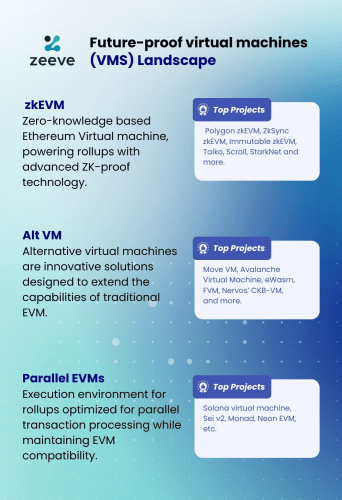
Wrap up!
Virtual machines exist like living organisms in the blockchain space. Therefore, it keeps developing to accommodate rising demands of dApps while eliminating the challenges of existing VMs. Whether it’s zkEVM, AltVM, or the parallel EVM; all these represent a paradigm shift for virtual machines. And, we expect to see more innovations coming on VM’s horizon that will drive even better performance, scalability, interoperability, and flexibility.
If you seek more in-depth information about future-proof virtual machines or EVM, feel free to connect with us. You can also discuss your upcoming L1/L2/L3 project for a cost-efficient execution and accelerated time-to-market. Additionally, Zeeve offers a highly-optimized RaaS platform that you can use to set up fully functional L2s/L3s in a low-code way. Try it yourself.



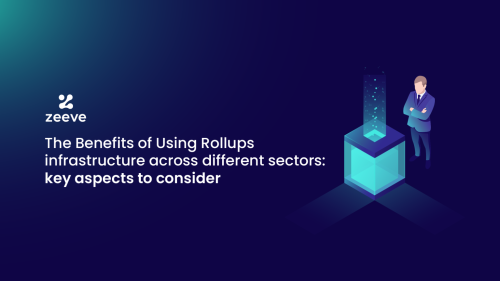
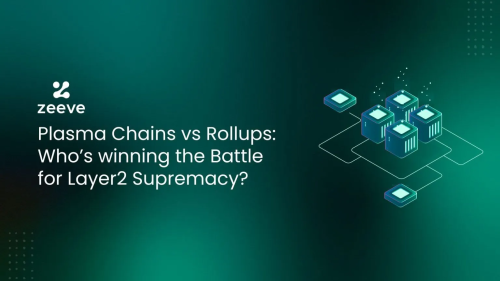

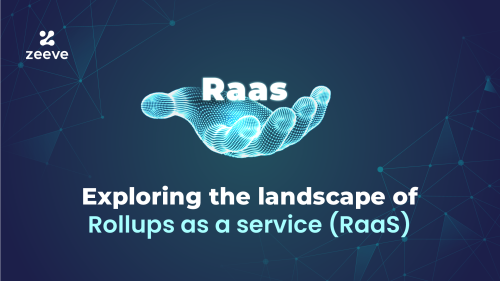
Responses